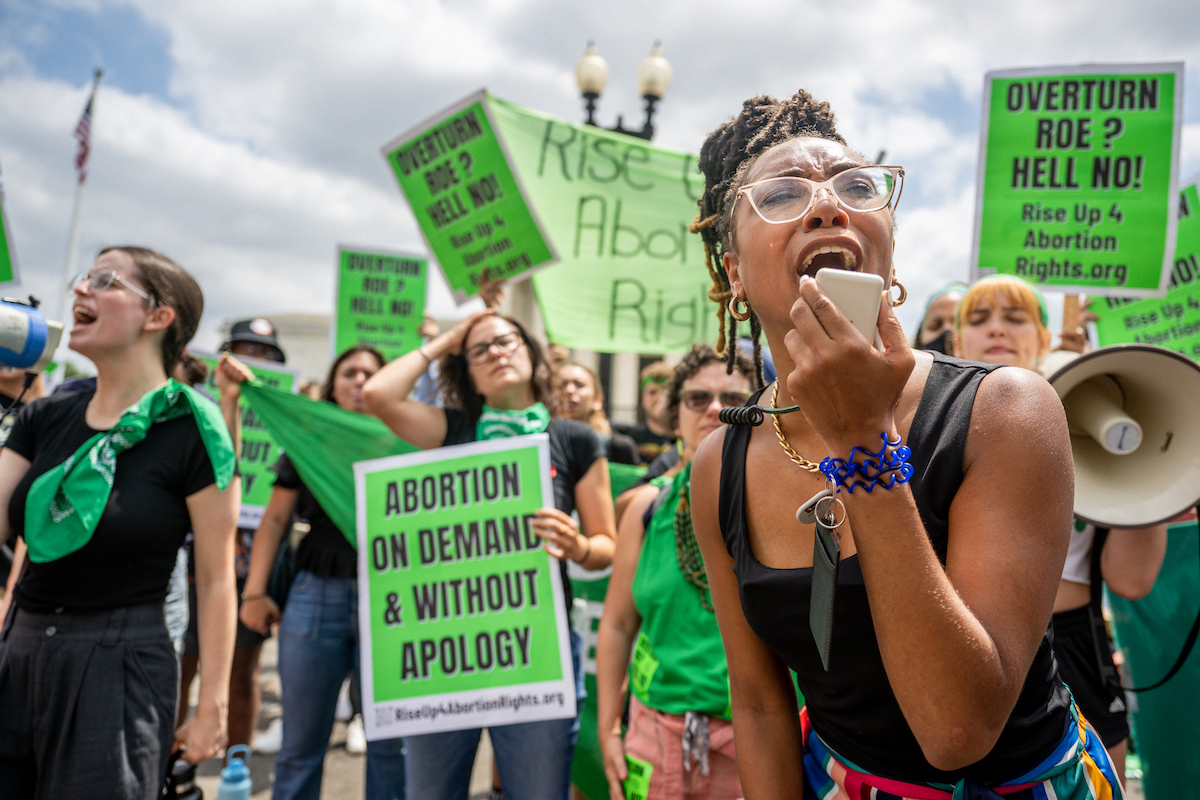The Supreme Court’s Investigation Into The Dobbs Leak Was A Total Joke
We found out nothing, hooray!

On Thursday, the office of the court marshal of the Supreme Court released their investigation into the leak of the fateful Dobbs vs. Jackson Women’s Health decision. However, the biggest insights the investigation offered is were its showcasing of a surprising lack of security and an egregious double standard between the justices and their staff. And the only solid finding of the investigation was that the Dobbs leak was not a hack. Which is… something?
To refresh your memory: on the evening of May 2, 2022, Politico published Justice Samuel Alito’s draft majority opinion on the overturn of Roe v. Wade. Protests broke out. While we were mourning the imminent loss of our rights to our own bodies, the justices behind the majority opinion bemoaned their own loss—of trust within the court. In the days following the leak, Justice Clarence Thomas bemoaned, “Look where we are, where now that trust or that belief is gone forever. When you lose that trust, especially in the institution that I’m in, it changes the institution fundamentally. You begin to look over your shoulder. It’s like kind of an infidelity, that you can explain it but you can’t undo it.”
Still, about a month later, the decision and subsequent end to the constitutional right to abortion would come to pass. And Chief Justice John Roberts ordered an investigation into the leak, under the mistaken assumption that the cavernous drop in public trust of the Court was due to the breach and not the contents therein. Or as a result of any other of the myriad developments of the last few years.
That investigation has now been made public, and it was a failure. (The Daily Beast, somewhat humorously, called it a “total dud.”) The investigation not find a leaker. But before you get mad at the court marshal, Gail A. Curley, know this: Chief Justice Roberts rejected the call to have an outside, independent government force with more investigative power conduct the investigation. He believed it would subject the court to “political influence” and further erode public trust. So, instead, he turned to the court marshal and her team. But, as the New York Times points out, “[Curley’s] division had little of the investigative muscle of other government agencies, no subpoena power and a staff only partly devoted to security. Others on her team dealt with court administrative tasks like staffing events and handling mail.” So the investigation was off to a bad start before it even truly started.
What Curley did find was a lack of security. Documents with “sensitive” information sentenced to “burn bags” (again, via the Times) hung around for days. About one third of the 97 employees interviewed said they printed out the opinion, but there is no way within the court to get a log of that information. Many of the printers aren’t even on the court’s central network.
However, the most shocking revelation was the ridiculous double standard between these employees and the justices. The initial version of the investigation released Thursday did not even mention whether or not the justices and their spouses had been questioned. The public backlash forced the court to release another statement. The marshal had talked to the judges, but on incredibly different terms than the nearly 100 staffers. As per the New York Times’ reporting:
Lower-level employees had been formally interrogated, recorded, pressed to sign affidavits denying any involvement and warned that they could lose their jobs if they failed to answer questions fully, according to interviews and the report.
In contrast, conversations with the justices had been a two-way “iterative process” in which they asked as well as answered questions, the marshal, Gail A. Curley, wrote. She had seen no need for them to sign affidavits, she said.
New York Times, January 21, 2023
A “two-way iterative process” is lovely for collaborative efforts—say, when brainstorming a fundraising plan or choreographing a dance. An interrogation, however, should not be a collaborative effort.
As one anonymous court worker told the Times: “They weren’t subjected to the same level of scrutiny. It’s hard to imagine any of them suffering meaningful consequences even if they were implicated in the leak.”
This double standard is egregious for its hypocrisy, especially considering the track record of some of the justices. In November 2022, a whistleblower came to the New York Times with a shocking allegation: Justice Samuel Alito and his wife had leaked the anti-contraception decision of Burwell v. Hobby Lobby Stores to him, then a leader of an anti-abortion movement, way back in 2014. What’s more, the whistleblower wrote to Chief Justice Roberts to inform him of these allegations before making them public—and while the Dobbs investigation was ongoing. Roberts never acknowledged the message.(Alito denies the allegations.)
Furthermore, in all of Roberts’ concerns about being apolitical, there’s the matter of Ginni Thomas, the wife of Justice Clarence Thomas. Ginni Thomas had an active role in January 6th. Despite this obvious conflict of interest, Justice Thomas would not recuse himself from investigations into the attempted insurrection.
So, no, the investigation did not help to rebuild the trust between the public and Supreme Court. If anything, it helped to break it even further—and weaken it within the court as well.
It’s all incredibly frustrating. One small amount of solace is that if you, too, are feeling that frustration, you’re definitely not alone. It’s so wide that it’s seeping into the very reporting of this story, by outlets far more impartial than us. This iteration of the Supreme Court does not deserve to be patted on the back, and I’m glad no one is pretending to do so.
(Featured image: Brandon Bell/Getty Images)
Have a tip we should know? [email protected]
